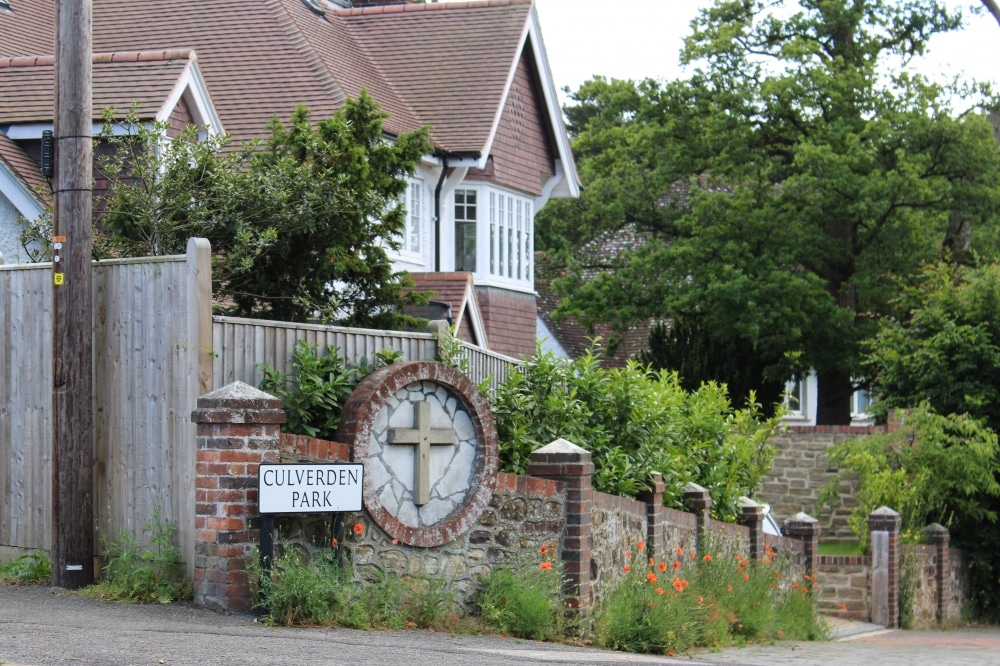Rocketing property prices across the UK mean 15 per cent of homes sold in the country now fetch more than £500,000 for the first time this year, with Kent a particular hotspot, according to Savills.
Analysis by the estate agent has shown that the number of £500,000-plus locations increased by 50 per cent during the pandemic – rising from 874 council wards across the UK in 2019 to 1,312 in 2021.
The South East in particular saw a 74 per cent rise in half a million pound purchases, reflecting a surge in house prices across more rural parts of the country.
The number of wards where the average property now fetches over £500,000 in Kent has increased from 39 to 68, say Savills – and many of these were in Tunbridge Wells.
While average house prices in the town of Royal Tunbridge Wells exceeded £500,000 before the pandemic, online estate agent Rightmove, now puts the average price for a property in the town at around £525,622. Price rises now mean properties in wards outside the town centre are also now fetching more than half a million.
According to Savills, Benenden & Cranbrook, Broadwater, Wadhurst, Hawkhurst & Sandhurst as well as Culverden near to the town centre, now all have average house prices exceeding £500,000.
Over the East Sussex border, homes in Crowborough West are also on average now fetching more than half a million pounds for the first time.
Natasha Selbie, director in the residential sales team at Savills in Tunbridge Wells, said: “The momentum for moving throughout the pandemic – born from a desire for more space, and spurred on by the government’s stamp duty holiday – resulted in a mini-house price boom across the country.
“But with stock in long-favoured hotspots across the county unable to meet increased demand, surrounding wards benefited, too. As a result, we’ve seen a surge in new geographical areas throughout Kent breaking the half a million pound threshold over the past two years.”
Reflecting on the local property market for the first half of the year Ms Selbie added: “While there continues to be a shortage of housing stock across the county, the situation has improved as the year has gone on with noticeable increases in the number of viewings and applicants registering with us.
“It’s not entirely surprising to see interest pick up at this time of year as it is well known that between now and September is considered prime selling season, but we are recording a high level of enquiries for available properties and significantly more than the weekly averages we were seeing before the pandemic.
“The market isn’t dramatically different to how it has been in the last 12 months insofar as demand is still very much there and the best in class properties – those which are both realistically priced and close to amenities – are selling very quickly.
“However we do anticipate that the economic headwinds to slow house price growth in the second half of the year. This could be helped further though if, as has been mooted, there are relaxations of mortgage regulations.”
While the news may be welcomed by homeowners who have seen their brick and mortar investments rocket over the last few years, it is bad news for first time buyers and those looking to get on the housing ladder.
Cllr Hugo Pound, the Labour group leader at Tunbridge Wells Borough Council and the cabinet member for Housing and Planning at the authority, told the Times the rising prices was ‘concerning’.
He said: “I think the ever-increasing price of housing in Tunbridge Wells is very concerning. Too many young people are having to move away from the area because they cannot afford to live here.
“The Council needs to work with partners to develop much more genuinely affordable housing throughout the Borough. Otherwise, where are our retail, hospitality, care, education and support workers ever going to be able to live?
“Where are young people who grow up here and want to stay in their communities ever going to be able to afford to rent, let alone buy?
“The new Borough Partnership intends to address this challenge over the next two years – the last Council only build 36 homes for social rent in the last five years. With a housing waiting list of 946, that is not good enough.”








